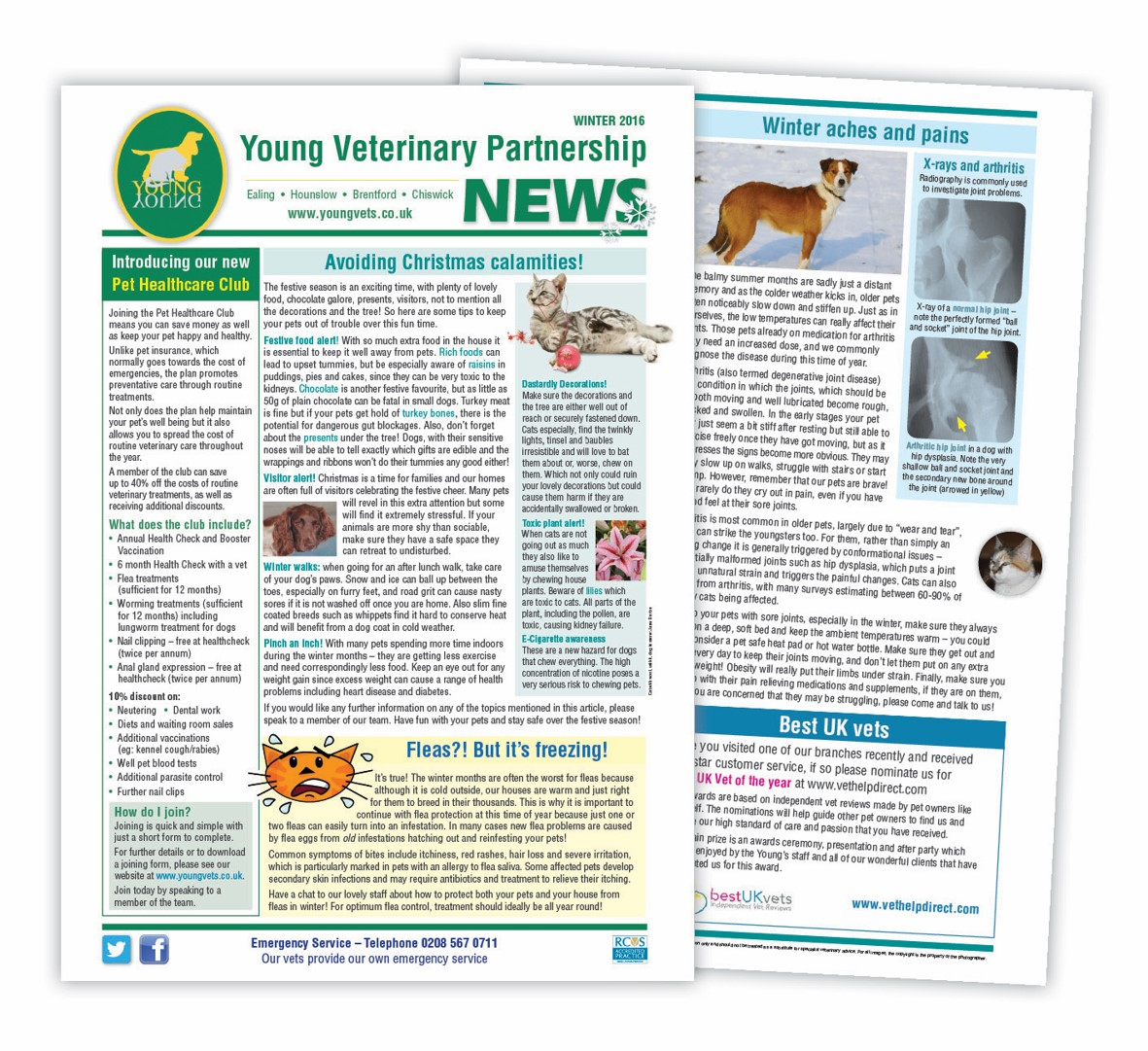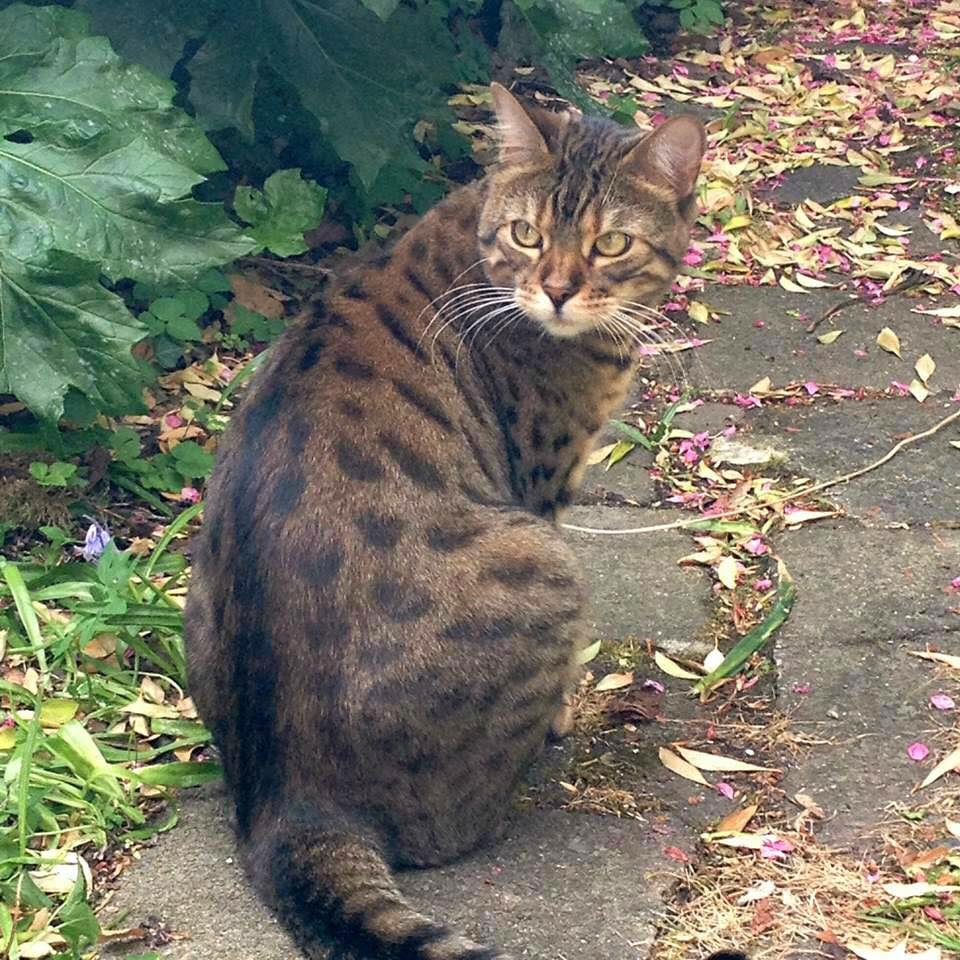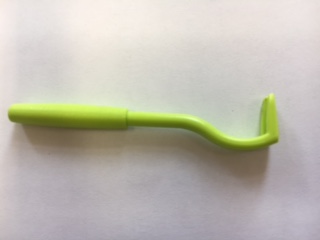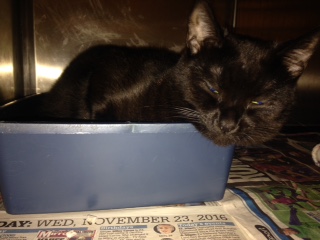Included in our Spring 2017 newsletter: Top tips to help you care for your older cat, lungworm alert, how to keep your rabbits teeth in good shape and what happens to your pet when they become overweight. Read our Spring 2017 newsletter here.

Included in our Spring 2017 newsletter: Top tips to help you care for your older cat, lungworm alert, how to keep your rabbits teeth in good shape and what happens to your pet when they become overweight. Read our Spring 2017 newsletter here.



Our summer newsletter can be downloaded by clicking here

Examples of individual breed traits include:
Always go to a breeder for your pedigree cat, and make sure you see the mother as well as the kitten so that you get some idea of what they may grow into and their personality. Never buy from a pet shop or a website, as you cannot be sure of their origins.


At the present time, the risk of your pet picking up diseases from ticks in the London area is low. Lyme disease can be spread to pets and people from ticks, have not seen any cases of pets picking up this disease whilst living in the area to date. However we are aware that Lyme disease may be present in ticks in Richmond park, and in other parks particularly where deer are present. If you and your dog visit these areas we recommended using specific tick treatment.
How to check your pet for ticks and what to watch out for.
It is easy to check your pet for ticks, we advise doing this daily particularly after walking your dog. Run your hands gently all over your pet feeling for any small lumps or bumps. Ticks are external parasites which live off the blood of mammals and feeding until they are full then dropping away from the body to start the process again.
Ticks come in a variation of sizes depending on how recently they have fed, their age, they start the size of a pin and can grow to the size of a finger nail. They are rounded in appearance and can be cream to fairly dark brown again this depends when they last fed.
Babesiosis disease in dogs.
A new tick borne disease called Babesiosis which uptil now had not been found in the UK, has recently been reported to have been found in four dogs in Harlow, Essex that had not travelled abroad. It can cause a severe anaemia, which can be fatal. The risk of picking up any disease in the London area remains low at the present time. We will monitor for any changes in the situation, and will post again if this changes.
What to do if you see a tick.
If you see a tick: We advise removing them with an O’Tom tick twister which you can purchase from us. The tick twister slides under the body of the tick and the twisting causes it to release its grasp. Do not try to use tweezers, this can leave the head in the skin which may cause a reaction.


When you bring your new kitten home try to continue using the same food at least in the first few days. If you want to change your kittens food to a different brand make this a gradual process over 5 – 7 days. Kitten food will have all the nutrients and vitamins they require, and vitamin supplements are not needed. If your kitten develops diarrhoea, stop the kitten food and feed boiled chicken or fish for a few days. Cats do not need milk once they are eating kitten food and it can cause diarrhoea. Fresh tap water should be available at all times. Continue feeding 3x daily until 6 months old, and then 2x daily. Dry food is better for your cats teeth as they get older. It may also be more convenient in warmer weather than wet food, but a mix of both may be offered.
Most kittens will have worms which have been passed from their mum. They will need worming when acquired (usually around 8-9 weeks of age). Worming comes in tablets or more commonly a spot on treatment from the vet.
We recommend vaccinating your kittens to protect them from air born viruses such as cat flu, and cat enteritis ( diarrhoea). Leukaemia vaccination is also usually included, and is recommended for any cat that will go outdoors. Yearly vaccination boosters are required to maintain their immunity.
Kittens are not as easy as dogs when it comes to being trained – cats are just more independent! However they should be provided with scratching posts, and have lots of toys to play with. A piece of paper rolled up into a ball can give a lot of fun! Avoid playing with cotton thread or wool as they are dangerous if swallowed. If they are badly behaved with biting an scratching, do not tell them off as they won’t understand and it may make them fearful. Just ignore them by leaving the room or by putting them in an area by themselves.
Should be used regularly for both indoor and outdoor cats (indoor cats may also pick up fleas, brought in on clothing, or by other pets). We recommend monthly spot on treatment with Stronghold ( which also treats the common worms -roundworm). Flea injections that are given every 6 months are also available. Flea collars and treatments from supermarkets are normally ineffective. Treatments from the vet are far more effective in preventing flea infestations occurring.
For further information on kitten and cat care see our other blogs :
How to stop kittens and cats scratching furniture
Tips to stop your cat spraying or toileting in the house
How to train your kitten to play without biting
Choosing a kitten – top ten tips
Cat carriers- how to get your kitten or cat to enjoy going in

A common misconception is that cats may be punishing you as their owner, for leaving them alone for too long. Cats do not do this, there will always be another reason.
- Medical Problems
Cystitis causes an increased urgency, but normally with blood in the urine. Kidney problems, thyroid problems may cause your pet to drink more and so need to urinate more.
- Cat litter box problems-
1-Cats may not like using a soiled litter tray, clean it out frequently. Do not use ammonia containing detergents in the box as to the cat it may smell like cat urine ( which contains ammonia).
2-If the sides of the box are too high, an elderly cat may struggle to get into it, or a small kitten may have difficulty.
3-The type of litter used
Finer clumping litter or coarse non clumping litter may be preferred by an individual cat. Try different types of litter
Avoid using scented litter. Most cats prefer non-scented litter.
4-The location of the litter box
Avoid placing the litter tray in a noisy, busy or dark area.
If another cat, dog, or human scares your cat when she’s in the box, or attacks her as she leaves, she may not want to use the litter box.
5-Cats that do not want to use the litter tray usually toilet on different surfaces. You may find urine and/or faeces on either soft surfaces like carpets, beds, or clothing, or on hard, shiny surfaces like tile floors or bathtubs. Depending on the severity of your cat’s aversion, he may continue to use the litter box, but intermittently.
Your cat may prefer using another surface, for instance carpets- and if so would not use a tiled bathroom floor. Alternatively your cat may choose to use the same inappropriate site – likely due to not wanting to use the litter tray. Unfortunately a medical problem such as cystitis may lead on to another problem such as preferring to use another type of surface.
If your cat rubs with his cheek, or scratches a surface, they are leaving their scent on the area. Similarly cats will sometimes spray small amounts of urine to leave their scent. This marks out their territory.
When cats spray it is usually on vertical surfaces, like the backs of chairs, or walls. They don’t crouch down to spray (as they do to urinate), but lift the tail which quivers, leaving a small patch of urine, often in the same places in the house. Un-neutered males and sometimes, un-spayed females spray most commonly, but 10% of neutered males and 5% of neutered females also spray. In households with multiple cats (particularly more than 7) the likelyhood of spraying is markedly increased.
Cats often spray when if their territory is threatened, such as when a new cat enters the home, or when neighbourhood cats come into their garden or house. New furniture and carpet smells may induce spraying behaviour. Cats also may spray if their routine is altered, such as a significant reduction in food availability.
You should always take your cat to the vet, as soon as you have noticed a problem, so that they can rule out medical causes of the abnormal behaviour.
If there is no medical problem, then the following may help-
The box itself may be the offender. Larger cats need bigger boxes, and kittens and elderly cats need boxes with low sides. Although humans like covered boxes for reducing odor and stray litter, from your cat’s point of view, covers hold odors in, and restrict his view of the area. You may need to purchase several types of boxes and several types of litter to determine which combination your cat likes best. Finally, provide as many boxes as there are cats in the house—plus one. For example, if you have two cats, there should be three litter boxes. This decreases competition and gives each cat a box of his or her own.
Increasing play with your cat may help, and introduce any new diets gradually.
Spraying can also result from territorial disputes between cats in the same household. They may need to be separated, each with their own safe area or room, and reintroduced slowly, using food treats to reward and encourage peaceful behavior.
Apply odor neutralizers anywhere your cat has sprayed may prevent him from spraying there again. Feliway, a synthetic pheromone that, when applied to household surfaces, mimics the scent of cat cheek gland secretions., and this may reduce spraying.
How to prevent litter box problems
1. Choosing an appropriate litter and box
2. Choosing a good litter box location
3. Keeping the box clean
Breaking a bad habit can take a while and may require patience. However it is generally worthwhile making an appointment to check your cat has not got any medical conditions that may be aggravating the problem.

So what can you do to make the experience easier for all involved?